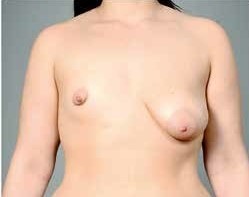breast asymmetry

Breast asymmetry refers to a difference between the two breasts, which can range from relatively minor to prominent. Differences might involve either one or more factors, including the size, volume, contour or position of the breast, as well as the positioning of the nipples and areolas. These differences might be present from adolescence when the breasts first start to form, or they can develop over time, often as a result of an injury or medical condition. Some changes are temporary and caused by hormonal fluctuations, such as when you are ovulating. Others are due to medical issues; many of which might be permanent, but easily treatable.
causes breast asymmetry
Breast asymmetry is very common and affects more than half of all women. There are a number of reasons why a woman’s breasts can change in size or volume, including trauma, puberty, and hormonal changes. Your breast tissue can change when you’re ovulating, and can often feel more full and sensitive. It’s common for the breasts to look bigger because they actually grow from water retention and blood flow. However, during your menstrual cycle, they’ll return to normal size.
Another cause for asymmetrical breasts is a condition called juvenile hypertrophy of the breast. Though rare, this can cause one breast to grow significantly larger than the other. It can be corrected with surgery.
Why does breast asymmetry occur?
Breast asymmetry is a widespread concern among women, affecting more than half of all women at some point in their lives. There are a variety of reasons why breasts may take on different sizes or shapes, including:
✔ Uneven breast development during puberty
✔ Juvenile hypertrophy, a condition during the teen years where one breast grows larger than the other
✔ Extreme weight fluctuations
✔ Pregnancy and breastfeeding
✔ Trauma to one of the breasts that causes enlargement or shrinkage
✔ Changes in breast size due to a medical condition
✔ Breast cancer treatment, such as a mastectomy
